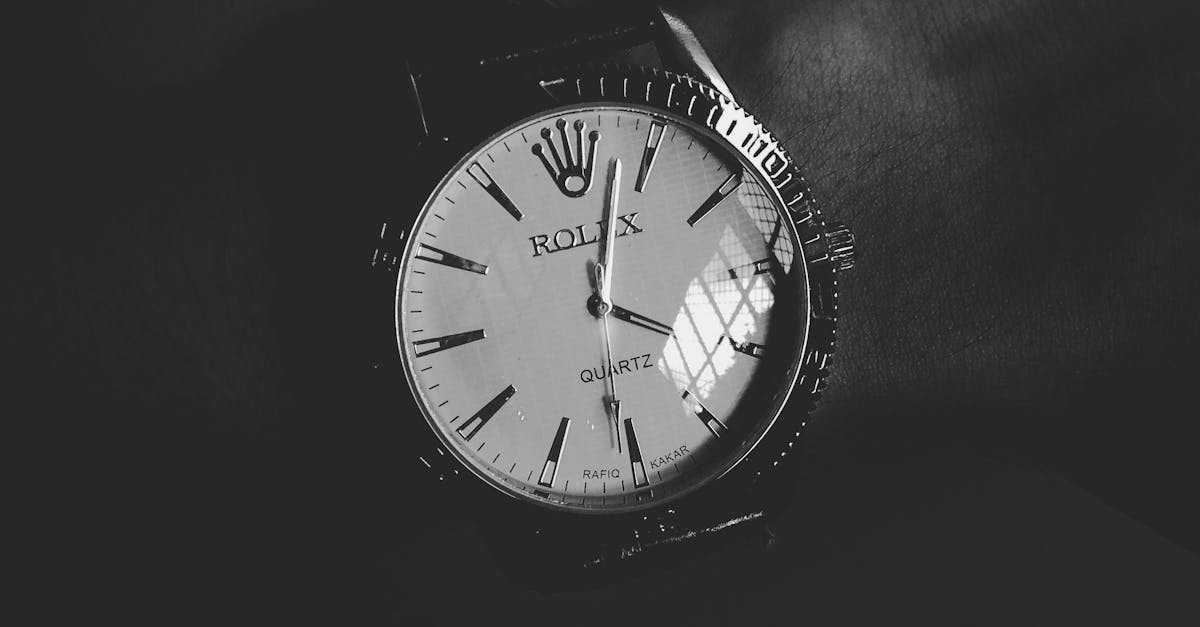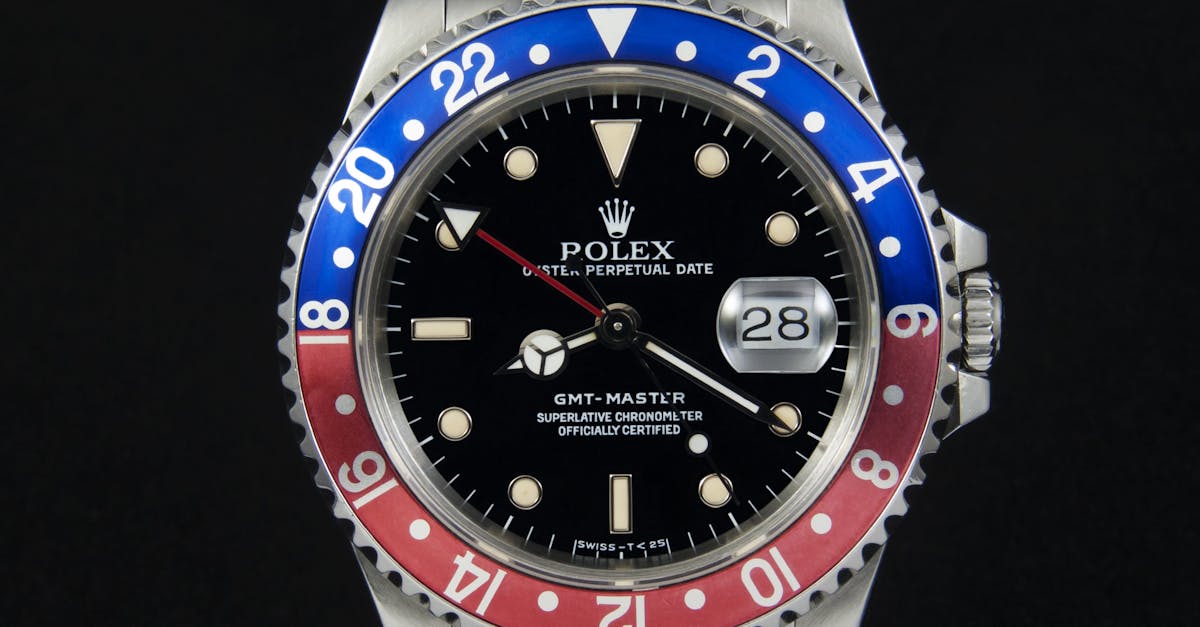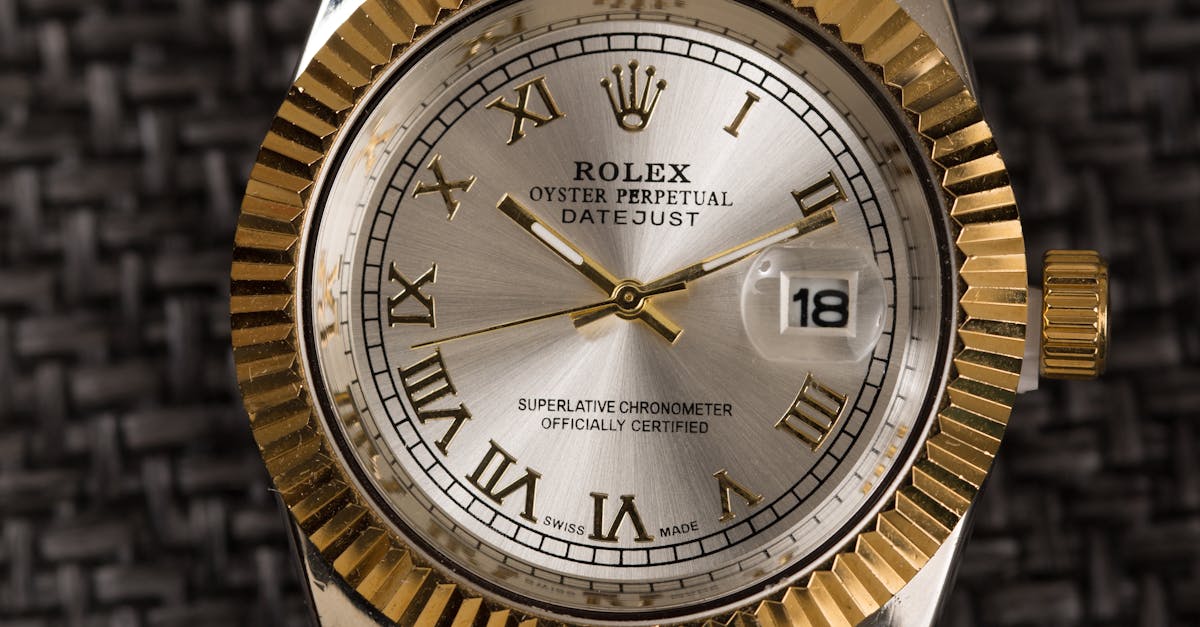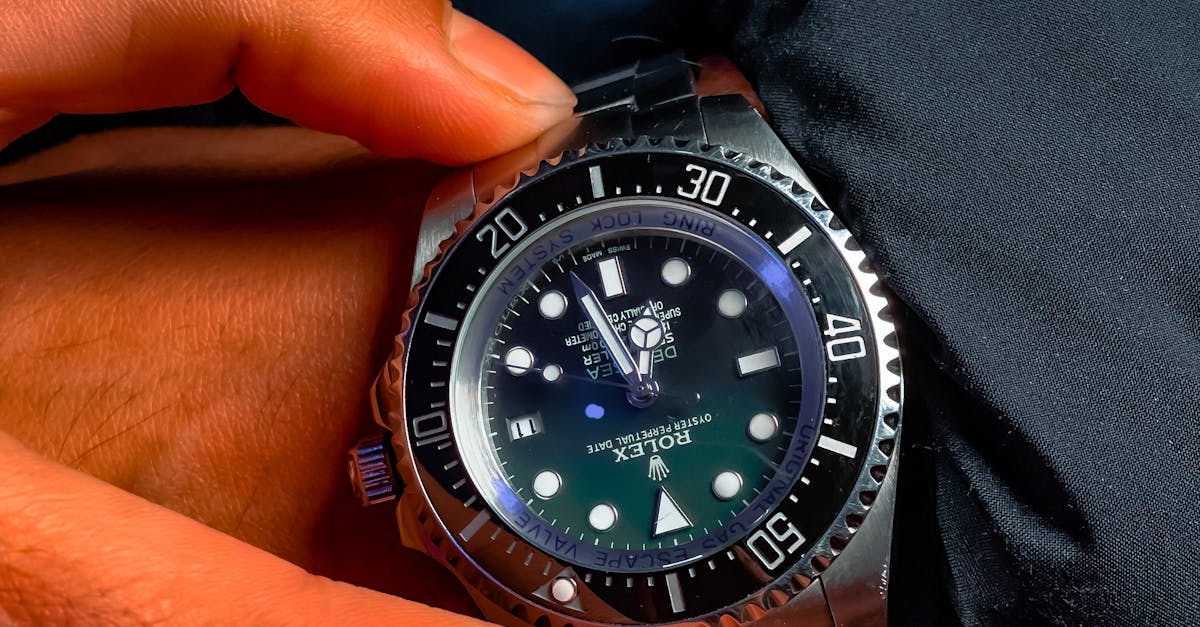Timepieces that Soared: The Evolution of Aviation Watches

As humans took to the skies, a new breed of timepiece was born – the aviation watch. These timepieces were not merely accessories but essential tools, designed to withstand the rigors of flight and provide pilots with the information they needed to navigate the skies.
From the early wristwatches worn by pioneering aviators to the sophisticated instruments used by today's pilots, aviation watches have come a long way. Throughout their evolution, they have remained symbols of precision, innovation, and the spirit of adventure. In this article, we will delve into the world of aviation timepieces, exploring their history, technical advancements, and iconic models that have left an indelible mark on the world of watchmaking. Join us on a journey through time as we uncover the stories behind these remarkable timepieces and celebrate their enduring legacy. Whether you're a seasoned collector, a passionate enthusiast, or simply curious about the world of aviation, this article has something to offer. So, fasten your seatbelts and prepare for an enlightening and inspiring exploration of the unique world of aviation timepieces.1. The Genesis of Aviation Timepieces

The history of aviation timepieces is intertwined with the history of aviation itself. As humans took to the skies, they quickly realized the need for specialized timekeeping instruments that could withstand the rigors of flight and provide pilots with the information they needed to navigate the skies.
The first wristwatches were developed in the late 19th century, and they quickly gained popularity among aviators. These early timepieces were often simple in design, with a focus on functionality over aesthetics. However, as aviation technology advanced, so too did the demands on pilot's watches. In the early 20th century, pilots began to use chronographs to time their flights and calculate their speed and distance. Chronographs are watches that have a built-in stopwatch function, and they quickly became an essential tool for aviators. Slide rules, which can be used to perform complex calculations, were also added to many pilot's watches.Early Wristwatches and Aviation
Early wristwatches played a pivotal role in the development of specialized aviation timepieces. Before the advent of wristwatches, pilots typically used pocket watches to keep track of time. However, pocket watches were not ideal for flying, as they were difficult to use while操纵ing an aircraft.
Wristwatches, on the other hand, were much more convenient and practical for pilots. They could be easily worn on the wrist, leaving the pilot's hands free to fly the plane. In addition, wristwatches could be designed with features that were specifically tailored to the needs of pilots, such as luminous dials and rotating bezels. One of the most important early wristwatches for pilots was the Cartier Santos, which was designed in 1904. The Santos was a simple but rugged watch that featured a square dial and a leather strap. It was quickly adopted by pilots, and it remained a popular choice for decades.The Rise of Pilot’s Watches
As aviation technology advanced, so too did the demands on pilot’s watches. Pilots needed watches that were not only accurate and reliable, but also easy to read and use in the cockpit. In addition, pilot’s watches needed to be able to withstand the rigors of flight, including extreme temperatures, vibration, and magnetic fields.
In the 1930s and 1940s, a number of iconic pilot's watches were developed. These watches, such as the Breitling Navitimer and the Rolex GMT-Master, featured a number of innovative design elements that made them ideal for aviators. The Breitling Navitimer, for example, featured a slide rule bezel that could be used to perform a variety of calculations, such as fuel consumption, ground speed, and climb rate. The Rolex GMT-Master featured a dual time zone function that allowed pilots to keep track of the time in two different time zones.2. The Sky’s the Limit: Precision and Functionality
The precision and functionality of aviation timepieces is the result of a combination of technical innovations and meticulous craftsmanship.
One of the most important innovations in the development of aviation timepieces was the use of chronographs. Chronographs are watches that have a built-in stopwatch function, and they are essential for pilots who need to be able to accurately measure time.
Another important innovation was the development of slide rules. Slide rules are mechanical calculators that can be used to perform a variety of calculations, such as fuel consumption, ground speed, and climb rate. Slide rules were widely used in aviation before the advent of electronic calculators.
Chronographs and Slide Rules
Chronographs and slide rules are two of the most important innovations in the history of aviation timepieces. Chronographs are watches that have a built-in stopwatch function, and they are essential for pilots who need to be able to accurately measure time. Slide rules are mechanical calculators that can be used to perform a variety of calculations, such as fuel consumption, ground speed, and climb rate.
Chronographs were first developed in the late 19th century, and they quickly became popular among pilots. The first chronographs were simple watches with a single stopwatch function, but over time, more complex chronographs were developed with multiple stopwatch functions and other features.
Slide rules were also first developed in the late 19th century, and they quickly became popular among pilots as well. Slide rules are relatively simple devices, but they can be used to perform a wide variety of calculations quickly and accurately.
Legibility and Illumination
In order to be effective, aviation timepieces need to be easy to read and use in a variety of challenging conditions. This means that they need to have clear and concise dials, and they need to be illuminated so that they can be read in low-light conditions.
One of the most important advances in the legibility of aviation timepieces was the development of luminous dials. Luminous dials are dials that are coated with a phosphorescent material that glows in the dark. This makes it possible for pilots to read their watches even in complete darkness.
Another important advance in the legibility of aviation timepieces was the development of anti-reflective coatings. Anti-reflective coatings are applied to the crystal of the watch, and they help to reduce glare and reflections. This makes it easier for pilots to read their watches in bright sunlight.
3. Icons of the Skies: Notable Aviation Watches
Throughout history, there have been a number of aviation timepieces that have left an indelible mark on the world of watchmaking. These watches are not only beautiful and iconic, but they are also incredibly functional and reliable.
One of the most famous aviation timepieces is the Breitling Navitimer. The Navitimer was first introduced in 1952, and it quickly became a favorite among pilots around the world. The Navitimer features a slide rule bezel that can be used to perform a variety of calculations, such as fuel consumption, ground speed, and climb rate. Another iconic aviation timepiece is the Rolex GMT-Master. The GMT-Master was first introduced in 1954, and it was designed to meet the needs of intercontinental pilots. The GMT-Master features a dual time zone function that allows pilots to keep track of the time in two different time zones. These are just a few of the many iconic aviation timepieces that have been created over the years. These watches are a testament to the ingenuity and craftsmanship of the watchmakers who created them, and they continue to inspire watch enthusiasts around the world.Breitling Navitimer
The Breitling Navitimer is one of the most iconic aviation timepieces ever created. It was first introduced in 1952, and it quickly became a favorite among pilots around the world. The Navitimer features a slide rule bezel that can be used to perform a variety of calculations, such as fuel consumption, ground speed, and climb rate.
The Navitimer was designed to be a tool watch, and it has been used by pilots in a variety of settings, from the cockpit of a commercial airliner to the wrist of a fighter pilot. The Navitimer is also a popular choice among collectors, and it is considered to be one of the most important watches in the history of watchmaking. Today, the Breitling Navitimer is still a popular choice among pilots and watch enthusiasts alike. It is a symbol of aviation excellence, and it is a watch that is built to last.Rolex GMT-Master
The Rolex GMT-Master is a groundbreaking watch that was designed to meet the demands of intercontinental pilots. It was first introduced in 1954, and it quickly became a favorite among pilots around the world. The GMT-Master features a dual time zone function that allows pilots to keep track of the time in two different time zones.
The GMT-Master was designed to be a tool watch, and it has been used by pilots in a variety of settings, from the cockpit of a commercial airliner to the wrist of a fighter pilot. The GMT-Master is also a popular choice among collectors, and it is considered to be one of the most important watches in the history of watchmaking. Today, the Rolex GMT-Master is still a popular choice among pilots and watch enthusiasts alike. It is a symbol of aviation excellence, and it is a watch that is built to last.4. Modern Marvels: Cutting-Edge Technology
Modern aviation timepieces are a marvel of engineering and design. They are made from lightweight and durable materials, and they incorporate the latest in technology to provide pilots with the information they need to fly safely and efficiently.
One of the most significant advances in modern aviation timepieces is the use of composite materials. Composite materials are made from a combination of different materials, and they are much lighter and more durable than traditional materials. This makes them ideal for use in aviation timepieces, as they can withstand the rigors of flight without adding unnecessary weight.
Another significant advance in modern aviation timepieces is the use of smart technology. Smartwatches are able to connect to a pilot’s smartphone, and they can provide a variety of information, such as weather updates, flight plans, and navigation data.
Smartwatches and Aviation
Smartwatches are becoming increasingly popular among pilots, as they offer a number of benefits over traditional aviation timepieces. Smartwatches are able to connect to a pilot’s smartphone, and they can provide a variety of information, such as weather updates, flight plans, and navigation data. This information can be displayed on the watch’s screen, or it can be transmitted to the pilot’s headset.
In addition to providing information, smartwatches can also be used to control a variety of aircraft systems. For example, some smartwatches can be used to control the aircraft’s autopilot, navigation system, and communication system. This can make it easier for pilots to fly the aircraft, and it can also reduce the risk of errors.
Overall, smartwatches are a valuable tool for pilots. They provide a variety of benefits over traditional aviation timepieces, and they can help pilots to fly more safely and efficiently.
Composite Materials and Lightweight Design
Composite materials are playing an increasingly important role in the design and manufacture of aviation timepieces. Composite materials are made from a combination of different materials, and they offer a number of advantages over traditional materials, such as metal and plastic. Composite materials are lighter and more durable than traditional materials, and they can be molded into complex shapes. This makes them ideal for use in aviation timepieces, as they can help to reduce weight and improve comfort.
One of the most common composite materials used in aviation timepieces is carbon fiber. Carbon fiber is a very strong and lightweight material, and it is often used in the construction of the watch case and bracelet. Other composite materials that are used in aviation timepieces include titanium and ceramic. Titanium is a lightweight and corrosion-resistant metal, and it is often used in the construction of the watch case. Ceramic is a very hard and scratch-resistant material, and it is often used in the construction of the watch bezel and crystal.
The use of composite materials in aviation timepieces is helping to improve the performance and comfort of these watches. Composite materials are lighter and more durable than traditional materials, and they can be molded into complex shapes. This makes them ideal for use in aviation timepieces, as they can help to reduce weight and improve comfort.
5. A Legacy of Precision and Adventure
Aviation timepieces have a long and storied history, and they have played a vital role in the development of aviation. These watches are not only beautiful and iconic, but they are also incredibly functional and reliable. They are a symbol of precision, innovation, and the spirit of adventure.
Throughout history, aviation timepieces have been used by pilots to navigate their way around the world. They have been used to set world records, to explore new frontiers, and to save lives. Aviation timepieces are a testament to the human spirit of exploration and innovation.
Today, aviation timepieces continue to be used by pilots around the world. They are also popular among collectors and enthusiasts. These watches are a reminder of the golden age of aviation, and they continue to inspire people to dream big.
Collectors and Enthusiasts
There is a vibrant community of collectors and enthusiasts who cherish the historical and aesthetic significance of aviation watches. These collectors come from all walks of life, but they share a common passion for these unique and iconic timepieces.
Some collectors focus on acquiring vintage aviation watches, while others prefer modern timepieces. Some collectors are interested in the technical aspects of aviation watches, while others are drawn to their beauty and history. Regardless of their specific interests, all collectors share a deep appreciation for these remarkable timepieces.
Collectors often gather at watch shows and other events to share their passion with others. They also participate in online forums and discussion groups, where they can connect with other collectors from around the world. The collecting community is a close-knit one, and collectors are always willing to share their knowledge and expertise with others.
Inspiration for Future Generations
Aviation timepieces have had a profound influence on modern watchmaking. The precision, functionality, and durability of these watches have set a high standard for all other timepieces. In addition, the iconic designs of aviation watches have inspired countless watchmakers to create their own unique timepieces.
Today, aviation timepieces continue to inspire aspiring aviators. These watches are a symbol of the adventure, excitement, and freedom that is associated with flying. They are a reminder that anything is possible if you set your mind to it.
If you are an aspiring aviator, I encourage you to learn more about aviation timepieces. These watches are a valuable tool for pilots, and they can also be a source of inspiration. Whether you are just starting out on your aviation journey or you are a seasoned pilot, I hope that you will find inspiration in the stories of the pilots and watchmakers who have come before you.




